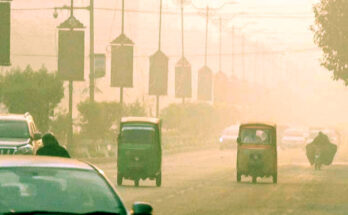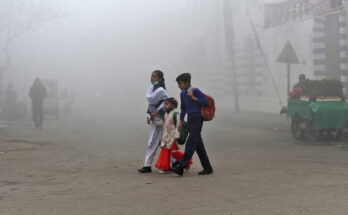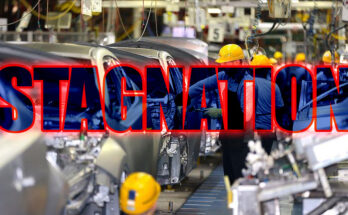Pakistan’s battle with smog has become a growing public health crisis, particularly in urban centers like Lahore, Punjab, and Islamabad. A key contributor to this worsening situation is the continued reliance on obsolete Euro-2 technology vehicles and the use of outdated, poor-quality fuels.
Related: Blame Where the Blame is Due
These vehicles emit significantly higher levels of harmful pollutants, such as particulate matter (PM2.5), nitrogen oxides (NOx), and sulfur dioxide (SO2), which combine to create the dense, toxic smog that blankets these cities, especially during the winter months. Without stricter emission standards and cleaner fuel options, the air quality in Pakistan’s major cities will continue to deteriorate, endangering the health of millions.
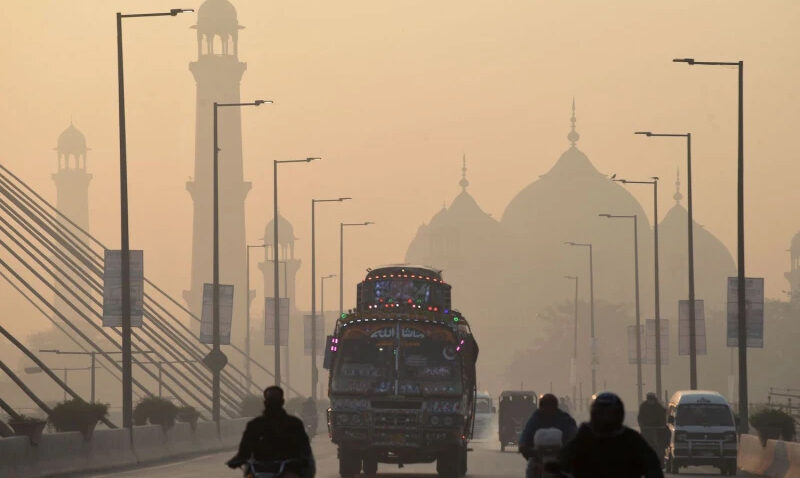
The contribution of obsolete Euro-2 technology cars and outdated fuel standards to smog in Pakistan, particularly in Lahore, Punjab, and Islamabad, is significant but multifaceted. Here’s a breakdown of how these factors contribute:
Euro-2 Technology
Euro-2 emission standards, introduced in the 1990s in Europe, are outdated by modern standards. These vehicles, which still form a significant part of Pakistan’s car fleet including brand new ones rolling out of assembly lines, produce higher levels of harmful emissions, including:
- Particulate Matter (PM2.5 and PM10): Fine particles that can penetrate deep into the lungs and bloodstream, contributing to smog and serious health risks.
- Nitrogen Oxides (NOx): These react with other compounds in the atmosphere to form ground-level ozone, a major component of smog.
- Sulfur Dioxide (SO2): High levels of sulfur in fuel can cause sulfur dioxide emissions, contributing to particulate matter and acid rain.
Many vehicles in Pakistan still rely on Euro-2 engines, which produce significantly higher emissions than vehicles that meet stricter modern standards like Euro-4 or Euro-6.
Obsolete Fuel
- High Sulfur Content: Fuel in Pakistan, especially diesel and petrol, has higher sulfur content compared to cleaner fuels used in countries with stricter emission standards. This leads to higher levels of SO2 emissions, which contribute to smog formation.
- Poor Fuel Quality: The low quality of fuel affects engine performance and increases emissions of unburnt hydrocarbons, carbon monoxide, and particulate matter.
Impact on Smog
Lahore, in particular, has been suffering from severe smog in recent years, especially during the winter months. The combination of pollution from vehicles, industrial emissions, and crop burning exacerbates the issue. The role of obsolete cars and fuel in smog is significant due to:
- Increased Emissions: Outdated vehicles and poor fuel quality result in the release of high levels of harmful pollutants, which combine with moisture in the air during cooler months to form smog.
- Inadequate Regulation: Lack of strict enforcement of emission standards and the slow transition to cleaner technologies like Euro-5 and Euro-6 fuels and vehicles have hindered progress.
Lahore’s Smog Crisis
- Vehicular Emissions: Studies have shown that vehicular emissions are one of the largest contributors to air pollution in urban areas like Lahore. Older vehicles with outdated engines and inefficient combustion processes contribute significantly to the pollution load.
- Climate and Geography: Lahore’s geographical location and weather patterns, especially in winter, cause pollutants to be trapped close to the ground, leading to the formation of thick smog.
Islamabad and Punjab
While Lahore is the epicenter, Islamabad and other areas of Punjab also face rising air pollution, with vehicular emissions being a primary contributor. The widespread use of Euro-2 and other obsolete technologies amplifies the problem in these regions as well.
Related: Lahore Becomes the Worst in the World for Air Quality
However, emission standards are not the only reason behind Pakistan’s smog crisis, though they play a significant role. Smog is a complex environmental issue caused by multiple factors that interact with each other, particularly during certain seasons.
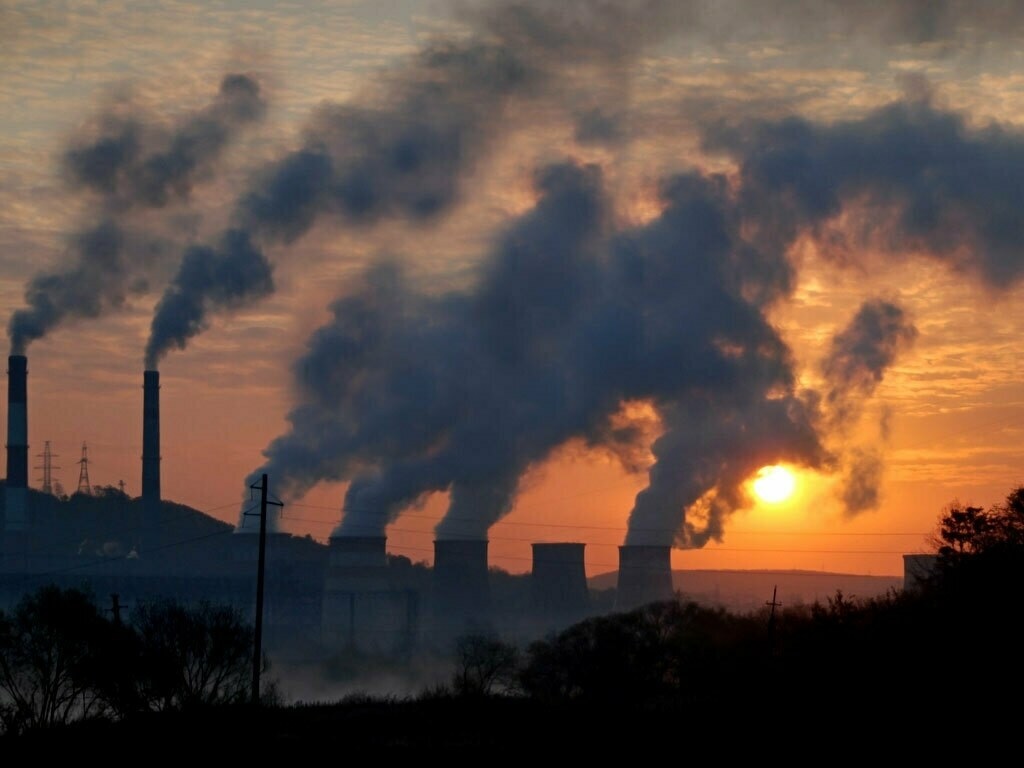
In addition to outdated vehicle emission standards and poor fuel quality, the following factors contribute to the worsening smog crisis in cities like Lahore, most parts of Punjab, and Islamabad:
Industrial Emissions
Factories and power plants, especially those using fossil fuels like coal, release large amounts of pollutants into the air, including sulfur dioxide (SO2), nitrogen oxides (NOx), and particulate matter. Industries in and around urban areas, particularly brick kilns, contribute heavily to air pollution.
Crop Burning
One of the most significant seasonal contributors to smog in Pakistan, particularly in Punjab, is the practice of stubble burning. After the harvest season, farmers burn the leftover crop residue, releasing huge amounts of smoke, particulate matter, and carbon dioxide (CO2) into the air. This is often compounded by similar practices in neighboring India, leading to cross-border pollution.
Urbanization and Construction Dust
Rapid urban development has led to increased construction activities in cities like Lahore and Islamabad. Construction dust and debris, combined with inadequate control measures, contribute to the suspended particulate matter in the air. This particulate matter worsens the air quality, contributing to the smog problem.
Deforestation and Lack of Green Spaces
The removal of trees and green cover reduces the natural filtration of air, as plants absorb pollutants like carbon dioxide and release oxygen. Urban areas with fewer green spaces suffer from poor air quality as there are fewer natural means to absorb pollutants.
Weather Patterns and Geography
Weather patterns, particularly during the winter, play a crucial role in smog formation. A phenomenon called temperature inversion occurs when a layer of warm air traps pollutants close to the ground, preventing their dispersal. This leads to higher concentrations of pollutants near the surface, creating thick, lingering smog. Lahore’s geographical location, surrounded by agricultural land and industrial hubs, further exacerbates this issue.
Use of Low-Quality Fuel and Biomass for Heating
In rural and some urban areas, the use of biomass fuels (such as wood, cow dung, and crop residues) for cooking and heating increases the levels of harmful emissions. These fuels release large quantities of carbon monoxide (CO), particulate matter, and volatile organic compounds (VOCs) into the atmosphere, which contribute to smog formation, particularly in colder months when their use increases.
Traffic Congestion
With rising urban populations, traffic congestion in cities like Lahore and Islamabad has worsened. Traffic jams lead to idling vehicles that emit high levels of exhaust fumes. Without efficient public transport systems and traffic management, the pollution from congested roads significantly adds to the smog problem.
Lack of Effective Environmental Regulation and Enforcement
While Pakistan has environmental regulations in place, the lack of proper enforcement is a critical issue. Many industries continue to flout pollution control measures, and the monitoring of vehicular emissions is often inadequate. The weak implementation of policies aimed at reducing emissions exacerbates the smog crisis.
Open Waste Burning
Open burning of municipal waste is another common practice, especially in less-regulated urban and rural areas. This practice releases toxic gases and particulate matter into the air, significantly contributing to local air pollution and smog.
Related: Pakistan Ranked 3rd Most Polluted Country in World Air Quality Report
The smog crisis in Pakistan is not caused by one factor alone. It is a result of a combination of outdated emission standards, industrial emissions, crop burning, construction dust, and socio-economic factors such as the use of low-quality fuels and insufficient regulatory enforcement. Addressing this issue requires a multi-faceted approach, including stricter enforcement of emission standards, industrial regulations, cleaner agricultural practices, and better urban planning.

I don’t eat, sleep or dream of cars, I am just someone who loves to see, think & write about cars. I love Ferrari in Pink but they won’t make one for me. I use X to write my full name, but that doesn’t mean I’m inspired by Altis X, in fact, my dad hates it 😀 Btw I’m an occasional writer so don’t expect too much from me 🙂

